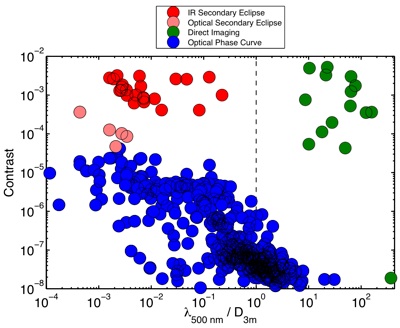Direct Detection of Exoplanets with Optical Polarimetry (1)
Exoplanet Contrast Requirements
-
• λ / D at 500 nm on a 3-m telescope is similar to λ / D in H band at Keck
-
• Direct imaging of RV-discovered exoplanets in H band requires at least a 30-m telescope
Transiting exoplanets allow direct detection of thermal emission during secondary eclipse, when the exoplanet passes behind its parent star, but this causes two problems:
-
• ≈10% of known exoplanets transit, so the large majority of exoplanets are inacessible to this technique
-
• It is difficult to separate scattered light from the Wien tail of re-radiated thermal emission: close-in exoplanets are so hot that they glow even in the optical
Polarimetry allows direct detection of close-in explanets in scattered light, and the high contrasts necessary (1-10 parts per million) are offset by the differential nature of polarimetry and reduction of systematic effects.
